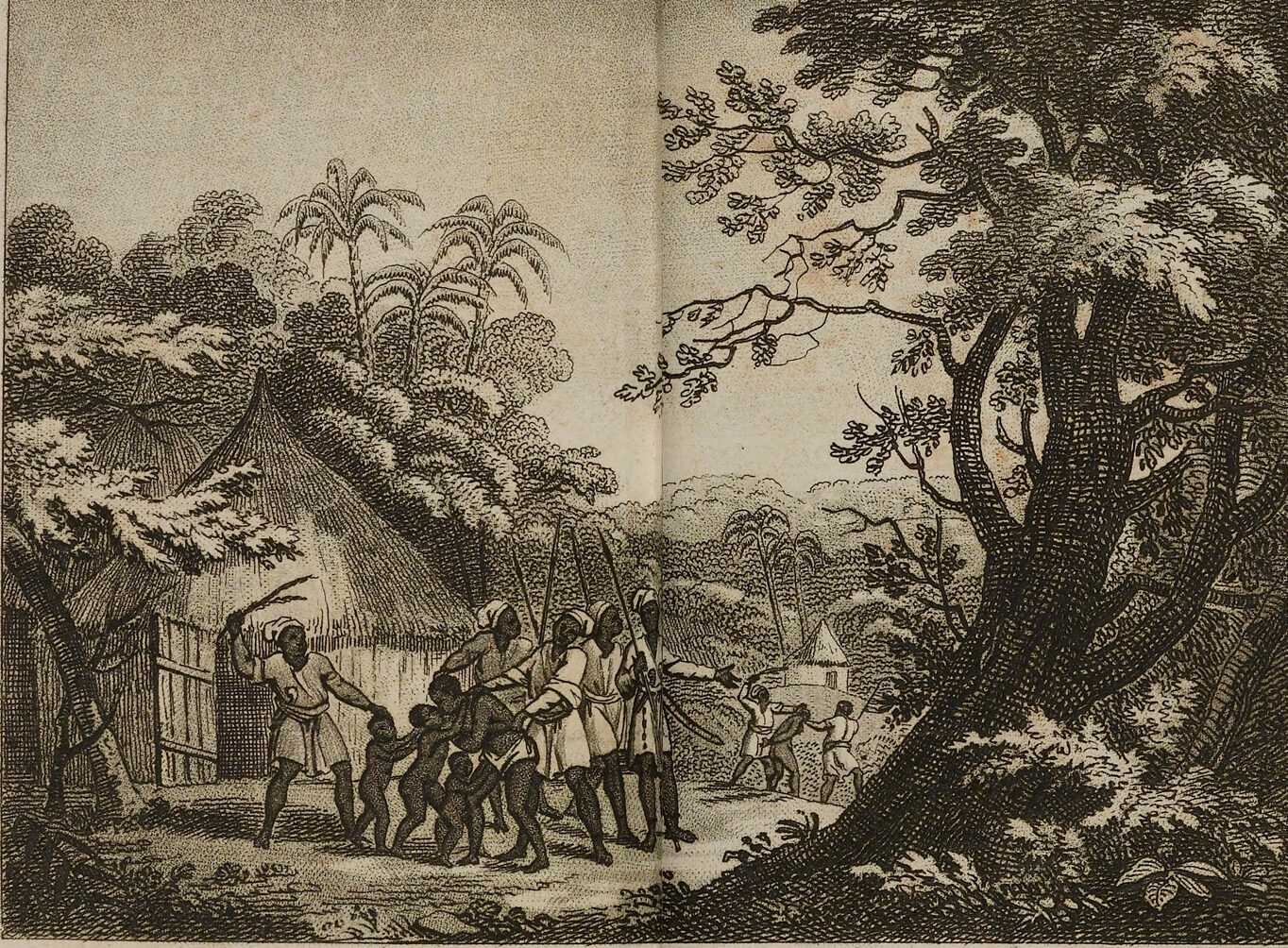Chapter 2
An Inhuman Trade
Following Columbus’s voyage in 1492, European’s traveled across the Atlantic and began the process of colonization. They displaced indigenous people, including killing some, placing others in bondage and seizing indigenous lands. As the global demand for slave labor grew, so did the Transatlantic Slave Trade, fueled in part by a new system of forced labor in the Atlantic World. Cowries, manillas, beads, and guns changed hands in exchange for African men, women, and children. By 1700, Europeans made money from the sale of African people and their labor—clearing land, carving out profitable landscapes, and cultivating cash crops in the Atlantic World.
The Trauma of Transition
The transition to slavery was traumatic. With each step of the process, captive Africans experienced immense physical and psychological strain. Torn away from their homelands and loved ones, they were marched hundreds of miles from the interior. Once they reached the coast, they were crammed into barracoons, or slave barracks, for an average of three months before being forced onto slave ships to cross the Atlantic. Those who survived carried forward their cultures, faiths, and the value of freedom.
I was brought from a state of innocence and freedom, and in a barbarous and cruel manner, conveyed to a state of horror and slavery.
Ottobah Cugoano, 1787
Kidnapping: Capturing People
Vue de Ben dans le pays de Cayor pres de Goree
Armed with European rifles, African and European slave catchers raided the homes of their rivals to capture men, women, and children for the Transatlantic Slave Trade.
We had a . . . discontented journey . . . in . . . fear that the people . . . would murder me . . . travelling so far by land . . . upwards of a thousand miles . . . I was about thirteen.
Louis Asa-Asa, 1831
Storing: Filling the Barracoons
Slave Barracoon, Sierra Leone
Captive Africans were kept in overcrowded prisons called barracoons. Fifteen to 30 percent died before they could be sold and put aboard slave ships.
The slaves were all put into a pen, and . . . ordered not to look about . . . to insure obedience, a man . . . with a whip . . . [was] ready to strike.
Mahommah Baquaqua, 1854
Inspecting: Appraising Property
English man tasting the sweat of an enslaved African man
European slave traders inspected captive Africans to see if they were free of illness and mentally sound. This illustration depicts a European licking an African to taste for disease.
The captains go ashore from time to time to examine the negroes . . . and to make their purchases . . . if they are afflicted . . . they are rejected.
Alexander Falconbridge, 1788
Branding: A Permanent Mark
Branding a Negress
Once purchased, enslaved people were burned with the mark of the purchaser to keep track of the new inventory.
A burning iron, with the . . . name of the companies, lies in the fire . . . [and is] marked on the breast.
Willem Bosman, 1700
Transporting: Shore to Ship
Chaloupe filled with newly purchased enslaved African people, transporting them to ships off the West African Coast.
After inspection, purchase, and branding, enslaved Africans were taken to slave ships waiting off the coast.
A vessel arrived to conduct us . . . to the ship, it was a . . . horrible scene, there was nothing to be heard but rattling of chains . . . and groans and cries of our fellow men.
Ottobah Cuagano, 1787
